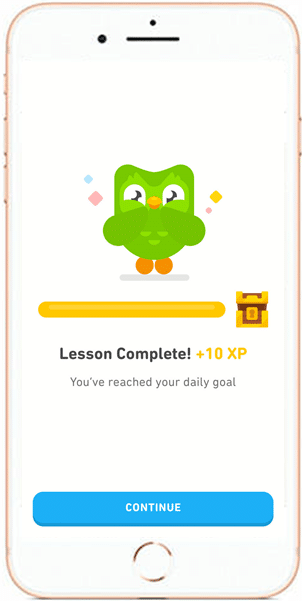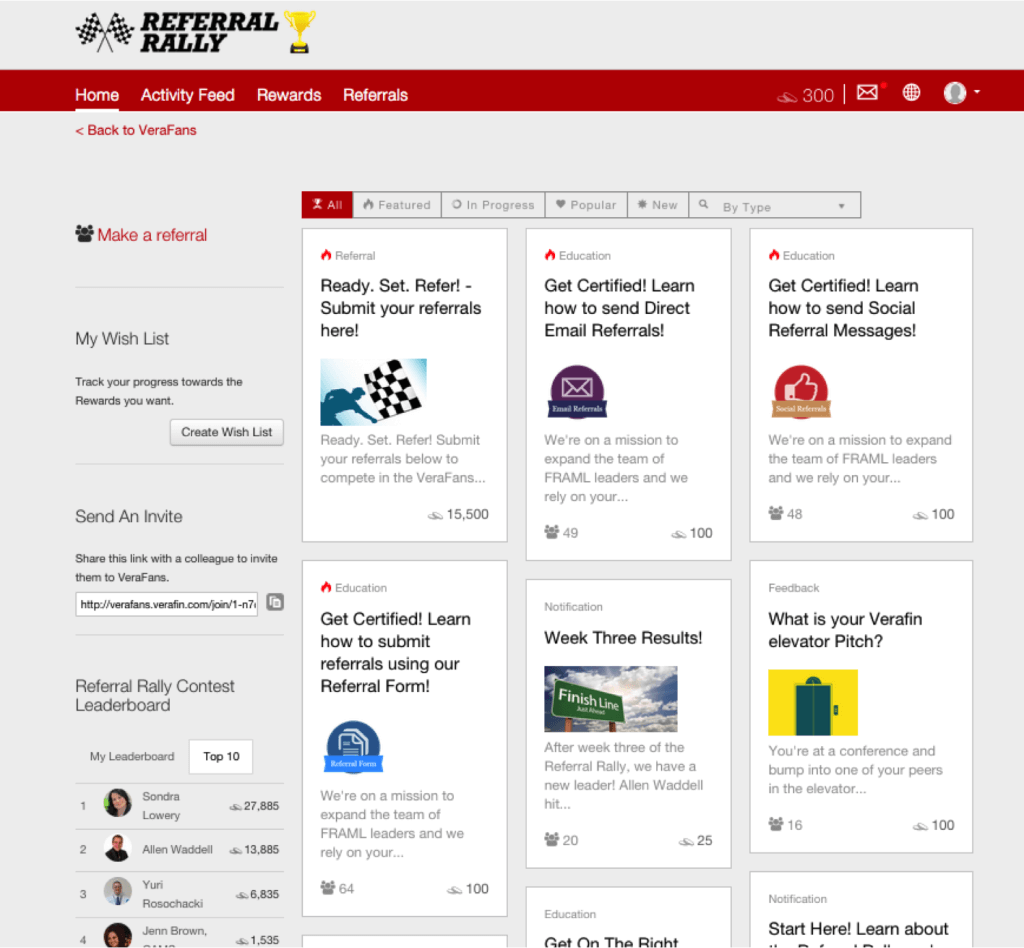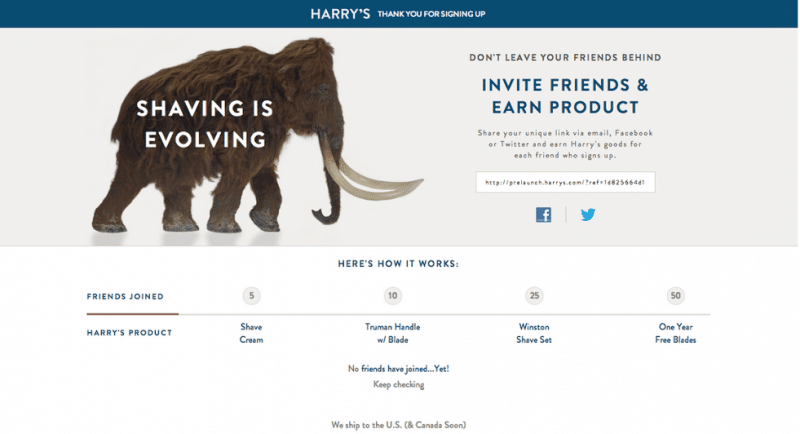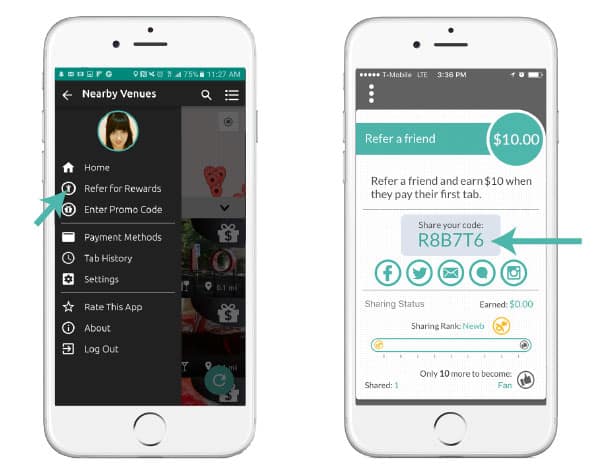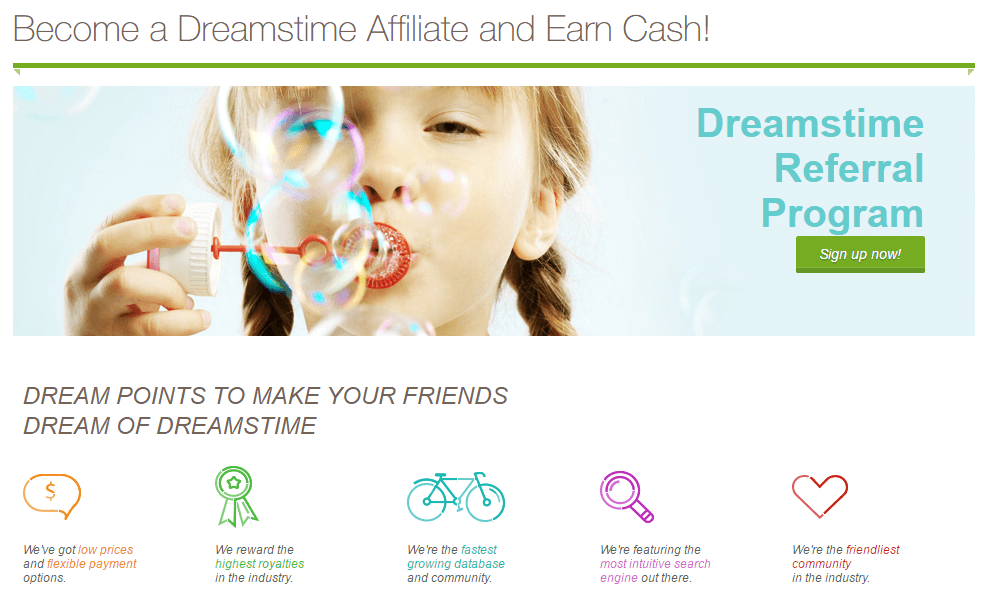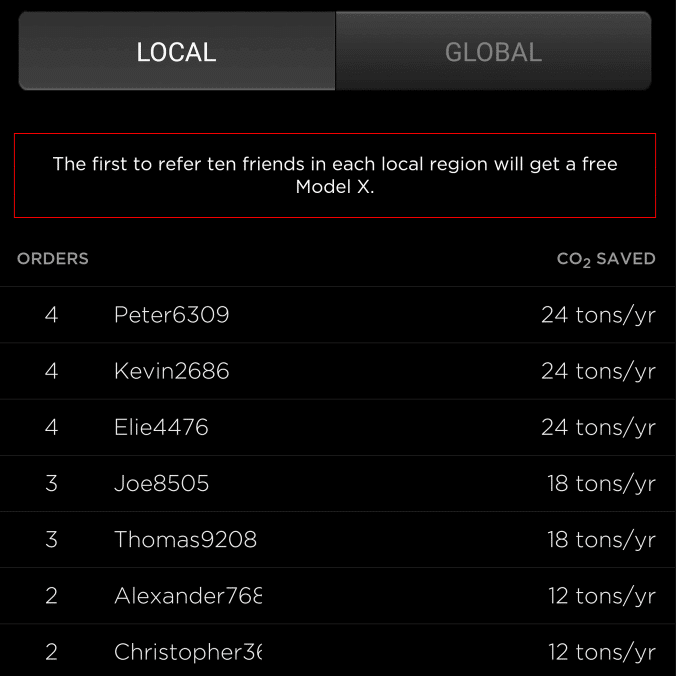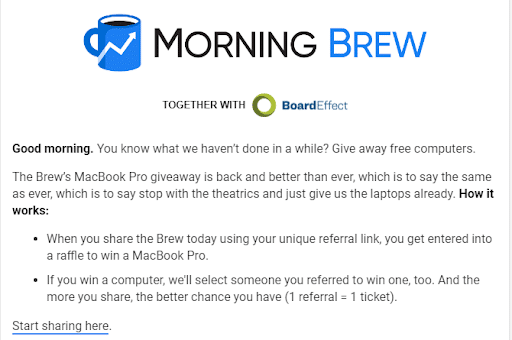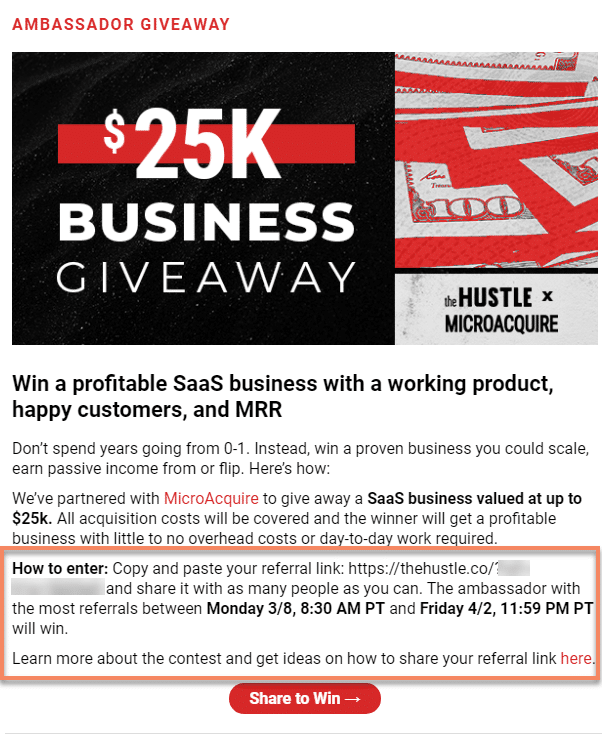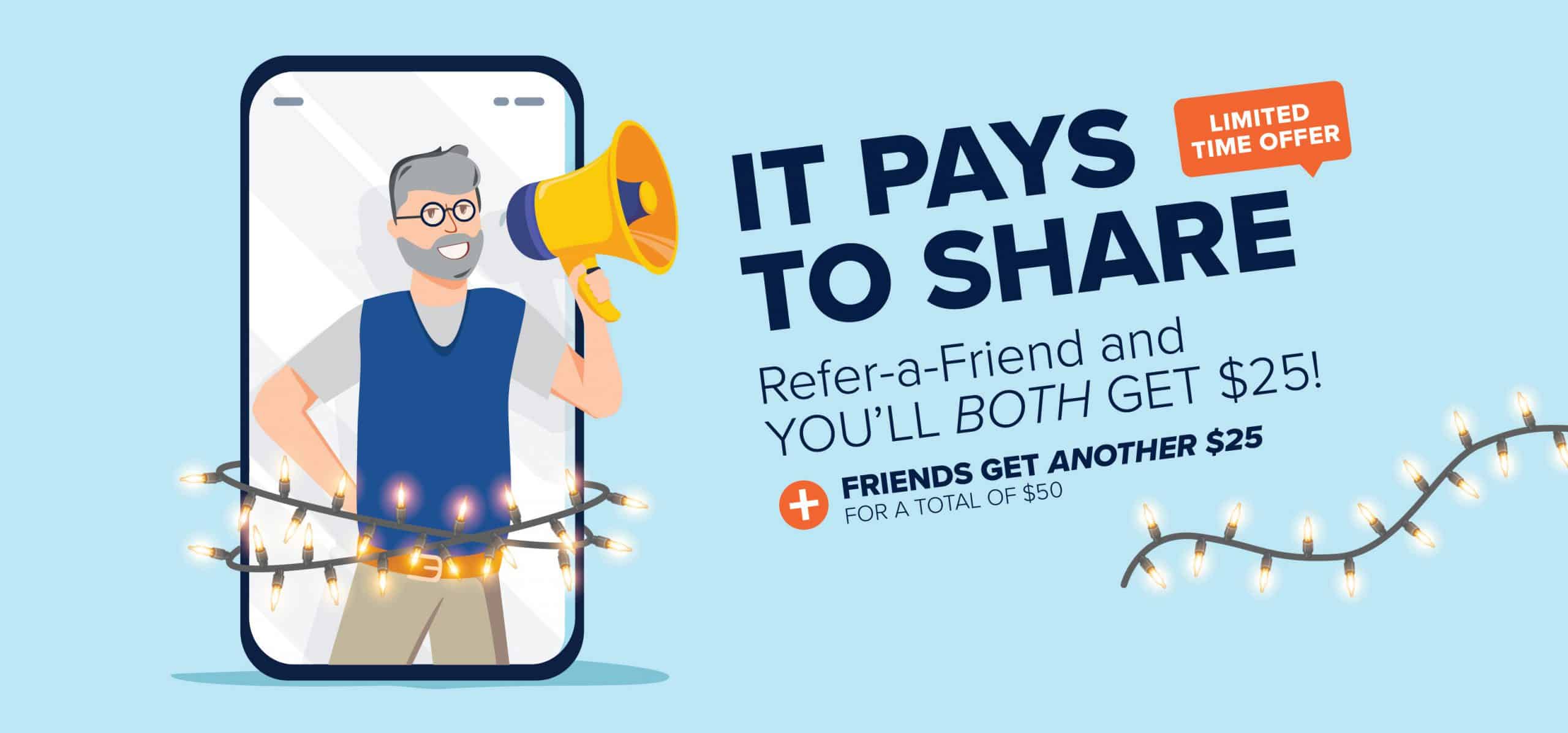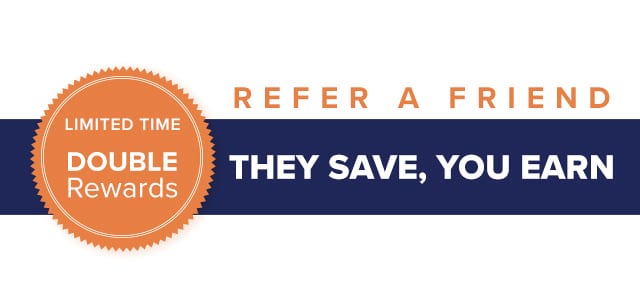You may already have a few ideas on how to increase customer involvement. But have you ever considered referral gamification as a way to make your program more fun?
Gamified referral programs are a win for everyone. By offering a referral program that feels like a game, customers are more likely to stay interested in promoting your product and earning rewards. And when a customer has fun while sharing your brand to others, you will also benefit from the increased word of mouth.
Today, we’ll cover what gamification is, why referral gamification is so effective, and the best ways to take your referral program to the next level with gamification.
What is gamification?
Gamification is the use of game mechanics and techniques in a marketing strategy or other business strategy. Think of the elements that hook you in mobile gaming apps or your favorite video game – accumulating points, advancing through levels, unlocking achievements, or just competing against other players. These are all the same things that can make your referral program more engaging for your customers.
With gamification, you can motivate users and increase the success of your referral program.
The idea of using gamification in referral programs is not a new concept. Market advisory company M2 Research has mentioned that gamification started surfacing around 2010. Since then, the technique has gained a lot of traction and is still growing in popularity. By 2025, the market value of gamification is expected to exceed $32 billion.
But does it deliver results? The answer is a resounding yes. As reported by Neil Patel, “gamification can boost conversions by up to seven times” across all forms of marketing campaigns, including referral programs.
Why is gamification so effective?
Mobile games are addictive! The elements inside of these games are designed to boost serotonin, the hormone that is responsible for our feelings of happiness.
A gamified marketing campaign draws on the serotonin boost people get from playing games. It doesn’t just engage users. It encourages them to make “playing” a habit.
Think of the popular language learning app Duolingo. If you’re like most people, learning a language can be a difficult process to stick with. Why is using Duolingo so engaging and motivating compared to the traditional way of learning a language?
It’s simple. Duolingo gamified language learning, or turned the process into a game.
- Users earn experience points for completing language lessons, and “level up” after gaining a certain number of points.
- And for every consecutive day that you meet your experience point goal (learning goal), you extend your “streak.”
- The “streak” is displayed prominently, as it’s tied to completing achievements.
- Users also earn in-app currency (called “Lingots”) by keeping their “streak” up. They can spend “Lingots” on special lessons in their language of choice, outfits for the game’s owl mascot, and power-ups that assist them in maintaining their “streak.”
You can create a referral game using similar game elements, and motivate customers to share your brand with friends.
Who uses gamification in marketing?
Many companies use gamification to increase sales and boost loyalty.
One well-known example is the Starbucks loyalty program. While enrolled in this program, you earn stars for your purchases and can use those stars for rewards. Starbucks also offers double reward days, which create a sense of urgency, generate buzz, and result in increased sales.
Starbucks has created a rewards program that gets people committed to their brand. And as a result of these easy rewards, their customers have probably shared the app with their friends.
Another good example is Verafin, a fraud detection and anti-money laundering software. Verafin used a month-long referral campaign, or what they called a “Referral Rally,” to increase referrals.
- At the end of each week, the member who had the most referrals would receive 1,000 points.
- Then, at the end of the month, the top three members with the most points could choose a prize.
- Verafin also added referral certification challenges to their “Referral Rally.” This helped educate their members on how to talk about the company to potential customers.
- As an additional incentive, once a member completed a certification challenge, they would receive a badge.
Verafin’s goal was to gain at least 40 new referrals during the rally. They received 117 instead. Since the members had to complete challenges within a time limit, it made the process feel like a game. By gamifying the referral marketing process, Verafin was able to engage its members and motivate them to send out more referrals.
6 ideas for referral gamification
How to gamify your referral program? The possibilities are nearly endless, but these are some of the best ways to engage your customers with gamification.
Below are our top picks for elements to gamify your referral program – both in limited-time and lasting ways.
1. Points
You could offer points for every referral made. After a customer meets a certain amount of points, let them trade the points for gifts. For example, a business can implement the following point system for their referral program:
- If you refer a friend, you will receive 5 points.
- If that referral makes a purchase, you will get 30 points.
2. Referral progress bars
Progress bars are similar to points, but they make tracking referrals easier.
A referral progress bar shows customers exactly how many referrals they made, as well as how many more they need to reach the next incentive. This engaging visual motivates customers to keep sharing within your referral game, just like the level progress bars in the most addicting mobile games or your favorite video games.
Progress bars are often used with tiered referral programs, where the more times a customer refers, the higher the reward.
Harry’s popular referral program uses a progress bar to show advocates how close they were to each reward, from shave cream at five referrals to an entire year’s supply of free blades at 50 referrals.
But progress bars can also be used with programs that offer the same reward for every referral. How? By awarding customers with new “sharing ranks” or “sharing levels” each time they make a certain amount of referrals.
For example, in the restaurant tab payment app TabbedOut, a user starts as a “Newb,” but once they refer 10 friends, they “level up” to the more rewarding title of “Fan.” The progress bar means there’s no question how close someone is to the next title, and there’s even a tracker that shows how much a user has earned from lifetime referrals.
3. Badges and achievements
You’ve probably seen plenty of badges and achievements in your favorite digital games. Complete a task or quest, earn an achievement with an interesting badge and a creative name.
Why not take another page from the mobile gaming book?
Badges can be used in a variety of ways within your game referral program. You could reward tiered badges as a way to encourage customers to reach the next referral milestone (this works great paired with a progress bar and fun “sharing level” titles!).
And on top of being visually appealing and motivating, you could also bundle other rewards with the badges. For example, Dreamstime awards customers a badge once they’ve reach a certain amount of referrals. Then, once they get a badge, customers get the additional opportunity to earn cash if they display their badge on their website.
4. Referral leaderboard
Adding a leaderboard to your referral program is a great way to encourage friendly competition. Who has the most referrals over a week? A month? A year?
Customers love to see where they stand on a referral leaderboard. The visual aspect can motivate them to send more referrals in order to win first place.
Referral leaderboards work especially well if the top referrers in a given period receive a prize. For example, you could award one grand prize to the top referrer, or give out rewards to the top three, top five, or top 10.
You could even give everyone who reaches a certain position, such as the top 50 or top 100, a smaller prize, like a store credit voucher. (This ties in with limited quantity rewards and contests, which we cover below).
Tesla is a great example of a company that has used a referral leaderboard. Tesla also changes their program every year, which definitely keeps things interesting for consumers. (It also helps that their product is highly sought after.)
One notable story from the Tesla marketing referral program was that the top referrers from each region were rewarded with a Ludicrous P90D Model S and a trip for two to the Model 3 unveiling event. The strong brand recognition, one-of-a-kind reward, and fun gamification made Tesla’s referral program a huge success.
5. Contests
Creating referral contests is another way to get the customer’s competitive juices flowing.
Similar to the referral leaderboard, contests pose a challenge for customers to bring in the most number of referrals in order to win a grand prize.
Or you can leave things up to chance, and give the prize to a random customer who actively participates in your referral program.
One of the most well-known referral contests out there comes from email newsletter Morning Brew. In addition to their ongoing, points-based referral program, Morning Brew runs several flash contests per year.
During these contests, each referral enters the referrer and their friend into a raffle for a coveted MacBook Pro laptop. The more someone shares, the higher their chances of winning!
Not to be outdone, Morning Brew’s newsletter rival, The Hustle, once ran a “most referrals” contest with a unique and awe-inspiring prize. The reader who made the most referrals to The Hustle in a given time frame was awarded a profitable SaaS business with a value of up to $25,000!
6. Limited-time flash offers
Limited-time offers can create a sense of urgency and gamify your referral experience. But even though they motivate customers to share with friends quickly, limited-time programs don’t offer the same growth potential as a lasting referral program does.
How can you make the most of this gamification element? Create shorter “flash offer” windows within your referral program, during which every referral is worth more than usual. Once the offer period expires, customers can still earn smaller rewards whenever they share your brand.
This is exactly what the photography website builder Zenfolio did, when they doubled their referral rewards only for a limited time.
Flash offers also work well when your program already has other gamification elements, like progress bars, badges, or a leaderboard.
Wrapping up: Create a gamified referral program
Gamified referral programs are fun for customers, as customers will feel like they are playing a game. Referral gamification can also create a buzz for your company. Excitement can lead to customer loyalty, and customer loyalty can result in more referrals.
Go ahead and try referral gamification to ramp up the fun – and the sharing!
Looking for more ways to enhance your referral program? We’ve got you covered with the best customer referral program ideas.
And to help you design a mobile-first referral program, check out our app referral program guide.

